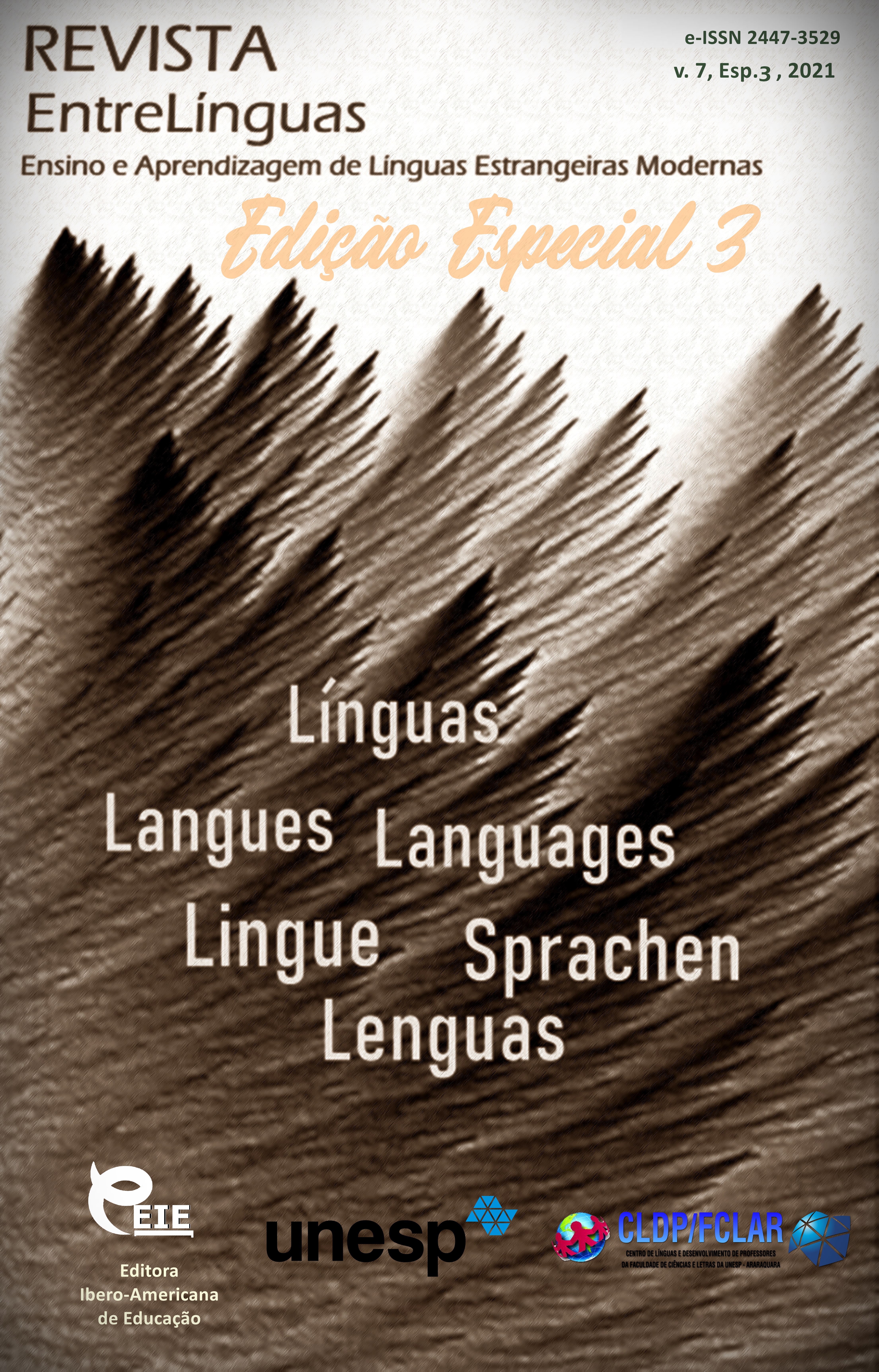Conceptual metaphor as a linguomental tool of reality knowledge: identification problem
DOI:
https://doi.org/10.29051/el.v7iesp.3.15735Keywords:
Cognitive linguistics, Cognitive metaphor, Conceptual metaphor, Linguistic instrument of cognitionAbstract
The article investigates conceptual metaphor as a linguo-instrumental tool by which a person is able to know, evaluate and transform the world. The history of metaphor study has been considered in detail, from its complete denial to understanding as a mechanism of objective reality cognition, and it has been found that most approaches to the interpretation of metaphor were demonstrated in the twentieth century. In particular, it has been considered as a means of forming concepts, and as a semantic-two-dimensional, clearly connoted unit, and as a figurative structure of language, as a marker of idiosyncrasy, and as an object of linguistic and cultural research etc. The twentieth century witnessed the emergence of new scientific linguistic directions, which laid the foundations for understanding the conceptual metaphor associated with understanding the processes of transformation of mental categories into the language during cognition of the world, interpretation of metaphorical meaning, mechanisms of metaphorical renaming and suggestion, and manipulative potential of metaphor, etc. Within different scientific approaches a metaphor is considered as a mental phenomenon, an important way of creating concepts in the language world, which contributed to the emergence of new theories of cognitive study of metaphors as descriptive theory blends, metaphorical modelling, cognitive-onomastic analysis, etc. Further study of the conceptual metaphor, primarily on specific textual material, will reveal the cognitive-linguistic mechanisms of a person, taking into account national specifics, to identify the deep links between the language of the people and its intellectual heritage.
Downloads
References
ARUTYUNOVA, D. Theory of metaphor. Society. Moscow: Progress, 1990. 512 p.
BELEKHOVA, L. I. Verbal poetic image in the historical-typological perspective: linguocognitive aspect (on the material of American poetry). Kyiv: Iyelandnd, 2002. 367 p.
CHENKI, A. Semantics in cognitive linguistics. Modern american linguistics: fundamental directions. Moscow: URSS Editorial, 2002. 480 p.
KNOWLES, M.; MOON, R. Introducing metaphor. London: Routledge, 2006. 180 p.
KRAVETS L. Dynamics of metaphor in the ukrainian poetry of the XX century: monograph. Kyiv: Academia, 2012. 416 p.
LAKOFF, J.; JOHNSON, M. Metaphors we live by. Moscow: URSS Editorial, 2004. 256 p.
NIKONOVA, V. G. Tragic picture of the world in Shakespeare's poetics. Dnepropetrovsk: DUEP Publishing House, 2007. 364 p.
OLDER, G.; HEATHER, B. NLP: a complete practical guide. Introductory course. Kyiv: Sofia, 2001. 384 p.
PIMENOVA, M. V.; KONDRATIEVA, O. N. Conceptual research. Introduction: textbook. allowance. Moscow: Flint; Science. 2011. 176 p.
SELIVANOVA, O. Cognitive mechanisms of metaphorization. Slavic collection: coll. Science. Kyiv Avenue: Dmytro Bury Publishing House, 2012.
SHTERN, I. B. Selected topics and lexicon of modern linguistics: encyclopedic dictionary. Kyiv: ArtEk. 1998. 336 p.
ZHUIKOVA, M. V. Genesis of figurative predication in ethnolinguistic aspect. Kiev, 2009. 36 p.
Published
How to Cite
Issue
Section
License

This work is licensed under a Creative Commons Attribution-NonCommercial-ShareAlike 4.0 International License.
Os manuscritos aceitos e publicados são de propriedade da Revista EntreLínguas. Os artigos publicados e as referências citadas na Revista EntreLínguas são de inteira responsabilidade de seus autores.
Transferência de direitos autorais – autorização para publicação
Caso o artigo submetido seja aprovado para publicação, já fica acordado que o(s) autor(es) autoriza(m) a UNESP a reproduzi-lo e publicá-lo na EntreLínguas, entendendo-se os termos “reprodução” e “publicação” conforme definição respectivamente dos incisos VI e I do artigo 5° da Lei 9610/98. O artigo poderá ser acessado pela rede mundial de computadores (Internet), sendo permitidas, a título gratuito, a consulta e a reprodução de exemplar do artigo para uso próprio de quem a consulta, desde que haja a citação ao texto consultado. Essa autorização de publicação 328 EntreLínguas, Araraquara, v. 1, n .2, p. 323-328, jul./dez. 2015 não tem limitação de tempo, ficando a UNESP responsável pela manutenção da identificação do(s) autor(es) do artigo. Os artigos publicados e as referências citadas na Revista EntreLínguas são de inteira responsabilidade de seus autores.











